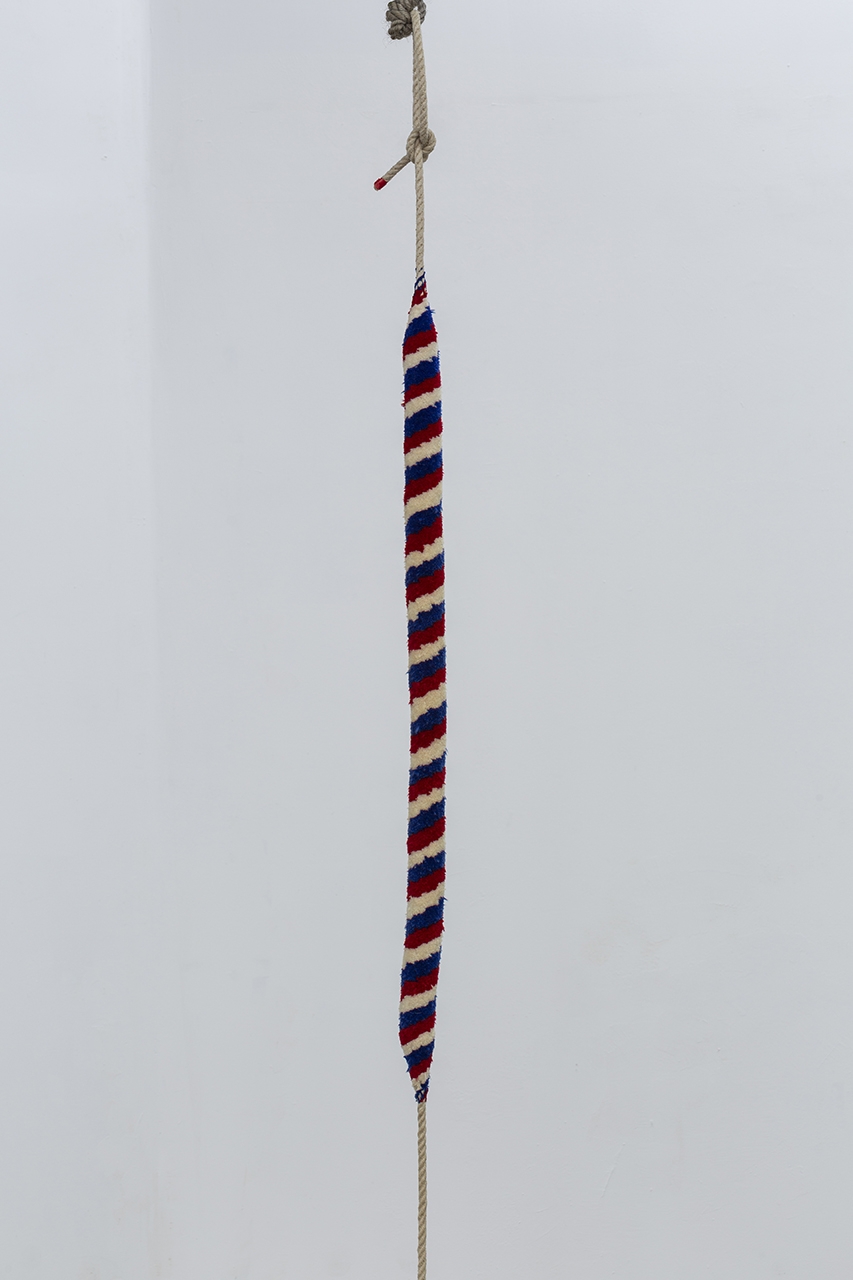Emily Jones
Snowshoe Hare and Allies23 November—10 January 2020
Finissage: 10 January, 6—9pm
Almanac presents Snowshoe Hare and Allies, a solo exhibition by London-based artist Emily Jones. The exhibition builds on Jones’ ongoing enquiry into belief, the relation between human and nature, and the conditions of living in a shared world.
The new body of work presented raises from a collection of images, encounters and scenarios that question imagined orders that affect our agency and experiences. These visual annotations have been re-staged or constitute the core for new productions that explore the inclusion of an individual subject within a plurality.
Emily’s artistic practice investigates the common terrains that enable our conceptions of time, love, relationships, the myths and rituals that inform our lives, our stances toward environment and nature.
The snowshoe hare in the exhibition title is a rabbit with large hind feet that, as they live in cold habitats, prevent them from sinking into the snow. Snowshoe hares, also called ‘varying hares’, exhibit seasonal changes to coat colour that help them to evade detection by predators, such as coyotes, foxes, hawks and owls. In summer, their fur is grayish- to reddish-brown, while in winter it is almost pure white for camouflage in the snow. Due to climate change, snowshoe hares will experience longer mismatches between coat color and ground cover, leading to increased vulnerability to predators. Detached from time and seasons, it will compromise their relation to their environment, leaving them to the hegemony of the present.
The allies.
A flock of papier-mâché geese are scattered across the floor of the exhibition space. Unlike the snowshoe hare, geese migrate. They can adapt to new environments and are very successful at living in cities, like pigeons or seagulls. So much so that they are considered a pest species and killed accordingly. The question is how/when/can we make space for other life. A strong bond to their offspring and an innate survival instinct characterise their behaviour as aggressive and territorial. They often display traits of human behaviour. No wonder if geese have a tendency to attack humans or other animals when they feel themselves or their goslings to be threatened. First, the geese stand erect, spread their wings, and produce a hissing sound. Next, the geese charge. They may then bite or attack with their wings.
In the history of ancient Rome, Juno's sacred geese saved the city from Gallic hordes with their hissing. As a matter of fact, nowadays domestic geese are also utilized as a guard animal.
The protection of offspring and nest is a survival instinct that humans share with animals. Indeed, instinct can be seen as a primordial and natural form of belief. The safety of the group is put at stake and a warning sound resonates.
A sound of emergency defines another element of the installation: three bells hanging from the roof beams. A colourful fluffy woollen 'sally' protects hands from being burnt when you pull the rope. They evoke a space for action or prayer, to get together, to face adversities.
The installation enacts a call for salvation from our inability to live in a shared and finite world, where the only way to heal nature seems to remove ourselves from it.
A group of scarecrows are staged under the big warehouse window which already recalls an industrial cathedral. These uncanny characters, modelled in the image of humans and a donkey, are reproductions of found scarecrows made reusing materials from the surroundings. They depict different geographies, cultures and ecologies. Frozen in their expression, they have no effect on the geese underneath, which carry on their activities undisturbed. They are appointed guardians of a field or a vegetable garden, but unable to react or communicate any threat.
Garden in many cultures means both fence and paradise. The scarecrows are confined in their place, waiting in a present where they are stuck. Silent keepers, condemned to control the productivity of the land. They attempt to represent a presence instead they are bodies suspended in a state of emergency.
Emily Jones’ recent exhibitions include: All god's children could be led astray, Pina Vienna, 2019; as a bird would a snake, Centre d’art Contemporain - la synagogue de Delme FR, 2019; Folk Hall for a Village, VIE D’ANGE, Montréal QC 2018; Sand Dollar Sea Biscuit, Prairie Chicago, IL US 2018; Just Us, First Continent, Baltimore, MD US 2017; Half-Earth, VEDA, Florence IT 2017; News from Nowhere, Cordova, Vienna AT 2016; We are the people we have been waiting for, Arcadia Missa, London UK, 2015; First Water to Tripoli, Jupiter Woods, London UK 2014 and The Hudson River, Lima Zulu London UK 2014.
Emily Jones’ exhibition at ALMANAC is supported by Arts Council England Grants for the Arts.
















